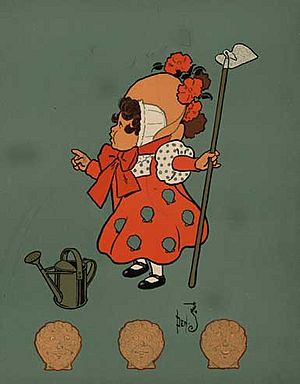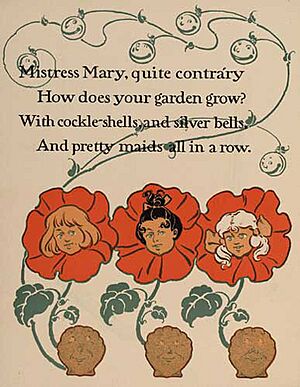Mary, Mary, Quite Contrary facts for kids
Quick facts for kids "Mary, Mary, Quite Contrary" |
|
|---|---|

Illustration by William Wallace Denslow
|
|
| Nursery rhyme | |
| Published | c. 1744 |
"Mary, Mary, Quite Contrary" is a well-known English nursery rhyme. This rhyme has been around for a long time. Some people think it has hidden meanings related to history or religion. However, its true beginnings and what it means are still debated. It is listed in the Roud Folk Song Index as number 19626. This index helps keep track of folk songs and rhymes.
The Rhyme's Words

The version of the rhyme you usually hear today goes like this:
Mary, Mary, quite contrary,
How does your garden grow?
With silver bells, and cockle shells,
And pretty maids all in a row.
Older Versions of the Rhyme
The very first time this rhyme was printed was in a book called Tommy Thumb's Pretty Song Book. This was in the year 1744. The words in that old book were a little different:
Mistress Mary, Quite contrary,
How does your garden grow?
With Silver Bells, And Cockle Shells,
And so my garden grows.
During the 1700s, several other printed versions of the rhyme appeared. These versions had another slight change in the last line:
Mistress Mary, Quite contrary,
How does your garden grow?
With Silver Bells, And Cockle Shells,
Sing cuckoos all in a row.
The last line of the rhyme has changed the most over time. Some other ways it has been written include:
- Cowslips all in a row
- With lady bells all in a row

